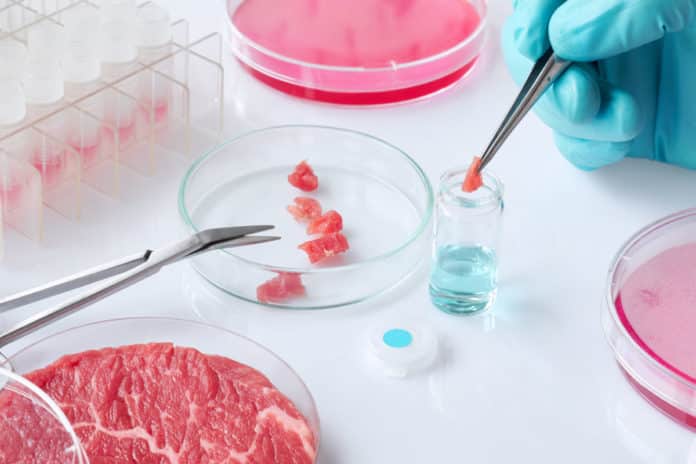Lab-Grown Meat Created Using Tissue Engineering
Tissue engineering specialists at the University of Bath are developing animal cells on blades of grass because they play their part in assisting the UK to understand how to effectively scale up production of cultured meat.
To create cultured or lab-grown meat, then a biopsy is obtained from an animal like a pig or cow then stem cells with that sample are set in a bioreactor in a lab, where they’re fed a solution of sugar, amino acids, vitamin
s, and minerals.This mix of nutrients and cells in particular conditions will allow the cells to develop into mature muscle cells which can form cultured meat.
Meat-eaters can soon get slaughter-free meat products if this process can be scaled to an industrial level. The present feel of cultured meat which makes it best suited to sausages and burgers. But, it is estimated that products like steak and bacon rashers will likely be developed in the future.
Directed by Dr. Marianne Ellis, the UK’s leading expert in this subject, the job is focusing on the effective scale-up of cultured meat.
Lab-grown meat goods are not available yet in the UK however, a number of organizations in the united states have created edible products such as a hamburger, and meatballs.
Dr. Ellis said: The UK is just one of the key essential players worldwide on the scale-up so that’s what we’re working on as engineers, developing systems to increase the cells on a large scale.
In terms of when we are very likely to see it in the supermarkets, probably the most innovative company at the moment is Mosa Meat and they’re calling four to five decades.
Presently, it’s extremely expensive and energy intensive to create cultured meat along with the team at Bath is working on decreasing the costs and energy required with the aim for cultured meat to be the exact same cost as traditional meats at supermarkets.
The researchers believe there are quite a few advantages of lab-grown meat, specifically helping address the world’s future food needs in addition to reducing greenhouse gas emissions as part of efforts to tackle global warming.
Dr. Ellis added: “The huge benefit of ingesting something such as cultured meat is the fact that it addresses our international needs and our global challenges of food safety and addressing climate change. Our global population is growing and our current food production approaches will not scale to make what we will need to feed everyone.”
60 million tonnes of additional protein to feed the population by 2050 and it cannot be done the way it is done now. It can be carried out anywhere in the world — it can be done where it’s really hot and where it is really cold.” she said.
We’ve got the opportunity also to tackle our climate issues because this method when compared with conventional beef production has much less greenhouse gas emissions, has less water use, has less land use and decreased energy use so it actually addresses those two crucial global challenges.”






























